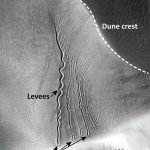A greedy black hole eats through two giant cosmic spirals
Astronomers have discovered that a supermassive black hole at the heart of the Circinus galaxy is feeding through two enormous spiral arms of gas.
This...
Volcanoes may have hidden ancient ice beneath Mars’s equator
Scientists have long known that Mars holds plenty of ice, but most of it is thought to be near the planet’s poles.
So when spacecraft...
Starship could cut the travel time to Uranus in half
The ice giants remain some of the most interesting places to explore in the solar system.
Uranus in particular has drawn a lot of interest...
Water in your coffee might be older than the Sun, study finds
Astronomers have made a stunning discovery that reveals just how ancient some of the water in our universe really is.
Using the powerful Atacama Large...
Astronomers spot a black hole shredding a star far from any galactic center
In a groundbreaking discovery, astronomers have detected powerful radio signals from a black hole tearing apart a star—and surprisingly, it didn’t happen in the...
Frozen in time: Why Martian ice may hide ancient signs of life
Could ancient microbes still be hiding on Mars—preserved for millions of years in ice? A new NASA and Penn State study suggests it’s possible.
Researchers...
Unexpected chemical discovery on Titan could rewrite the rules of life’s origins
Scientists from Chalmers University of Technology in Sweden and NASA have made a surprising discovery on Saturn’s largest moon, Titan, that challenges one of...
Mysterious galactic glow may be the first sign of dark matter
For decades, astronomers have been puzzled by a faint but powerful glow of gamma rays shining from the center of our Milky Way galaxy.
Now,...
Martian sandworms: How CO₂ ice blocks carve mysterious gullies on Mars
The strange gullies etched into the red sands of Mars have long puzzled scientists.
Were they carved by running water, avalanches, or perhaps even traces...
Dark matter may leave a subtle “fingerprint” on light
Dark matter—the mysterious substance that makes up about 27% of the universe—has long been thought to be completely invisible. But new research suggests that...










